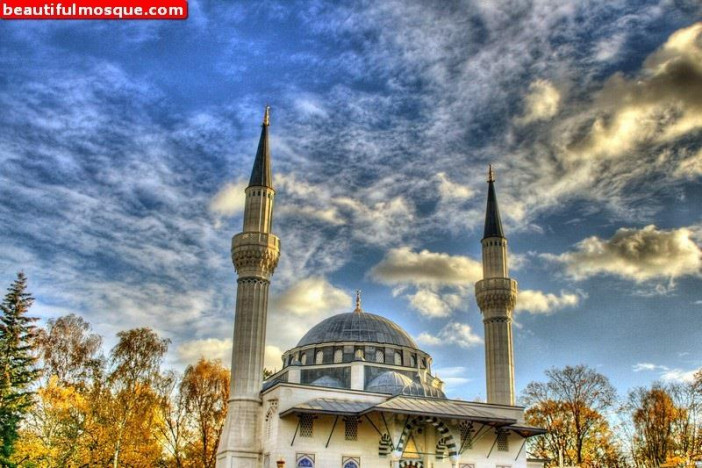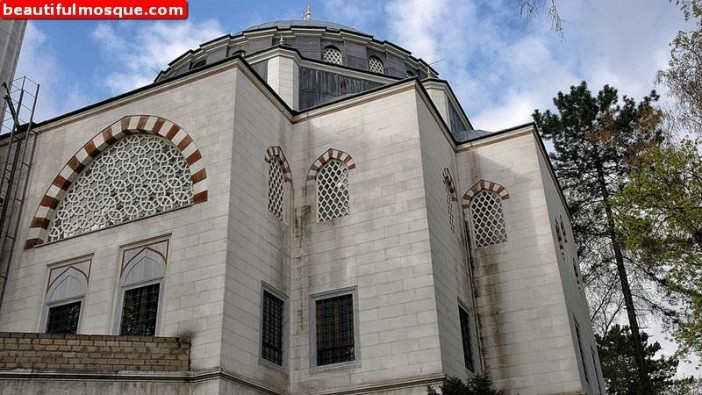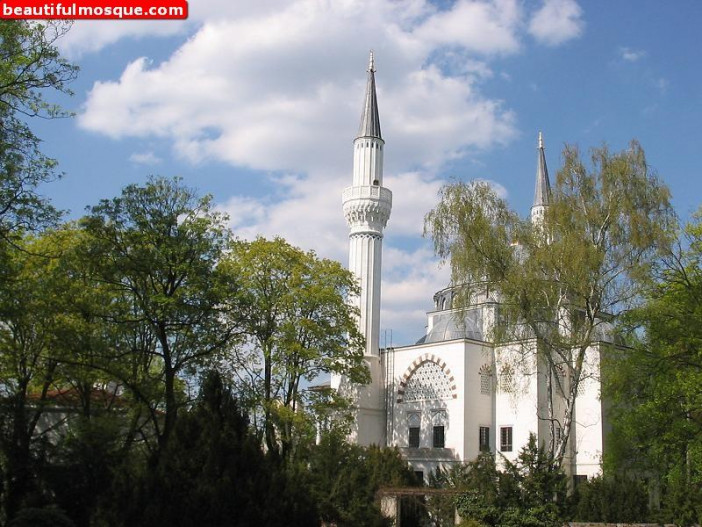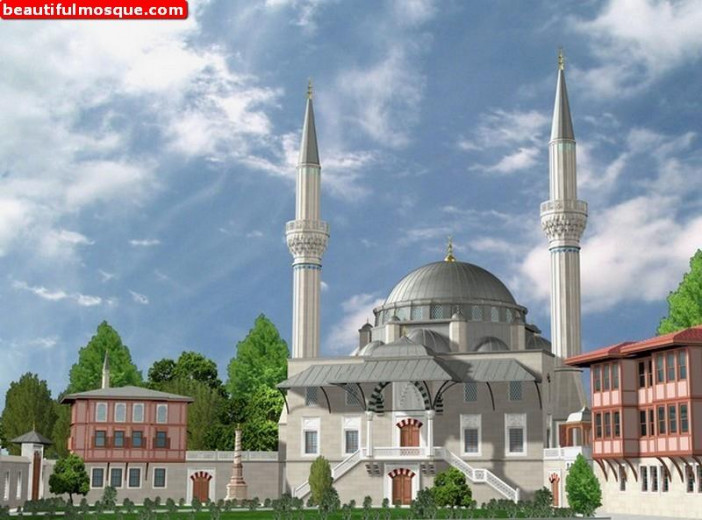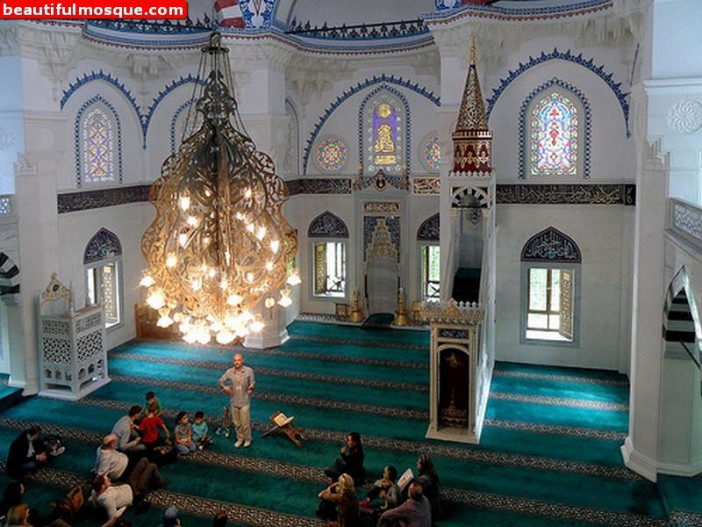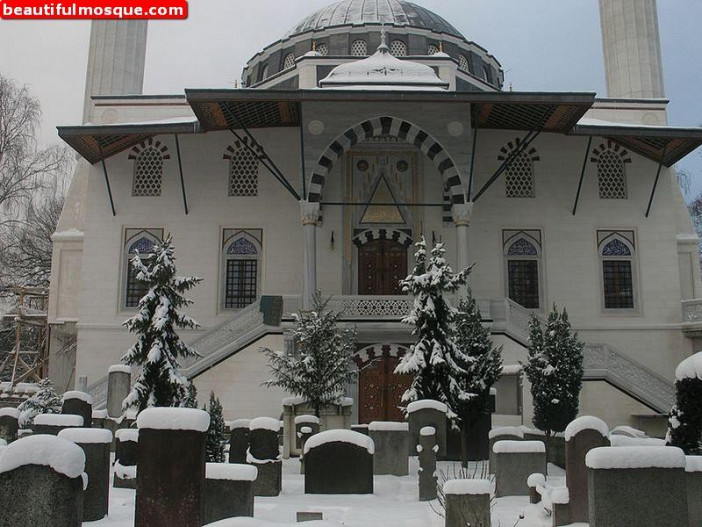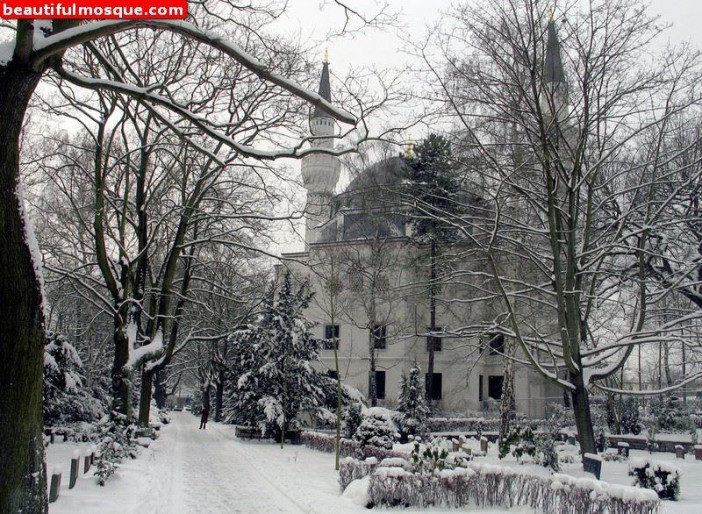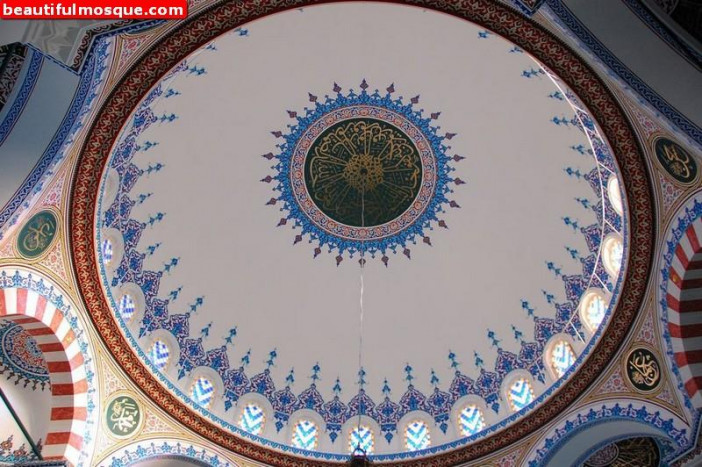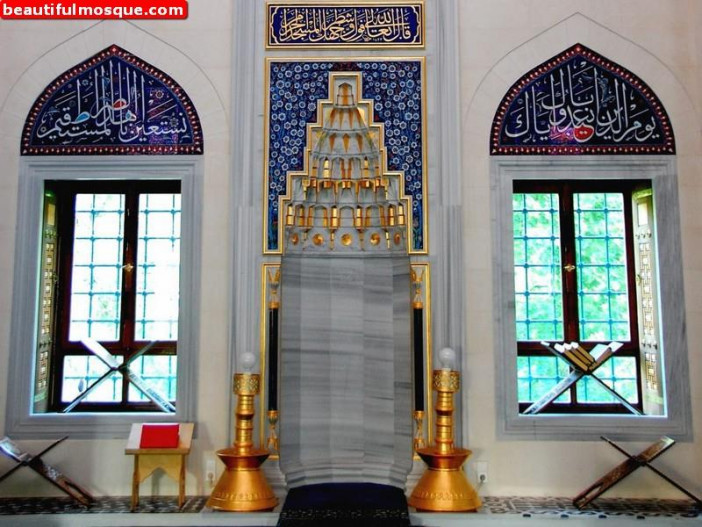Şehitlik moschee - Berlin
History
Berlin Germany The Sehitlik Mosque was built before 1983 at the Turkish cemetery at the Columbia dam in the district of Neukölln and expanded between 1999 and 2005. The mosque took its name from the Turkish cemetery, which was created back in 1863 as a diplomatic graveyard.
Urban and Architectural
Architecture:
The mosque was built in an octagon-dome-bearing pillar and arch form from a steel structure and it is 4 storied building.
The building offers 1500 square and the faithful prayer hall in the 1st floor has an area of 365 square meters. It has 2 minarets of height 37.1 m, and the dome height is 21,3 m.
Art & materials:
All materials used such as wood, marble or plaster windows were prepared and installed true to the original with great effort. The plates on which the names stand are the transition elements.
- sharp intermediate cuts of the transitions from the main dome to the small domes are visually made easier by these elements.
-The muqarnas:
Located in the lower layer, they work as transition elements that enable the aesthetic connection between the small domes and the outer walls.
-the fonts on the main dome were made with 23-carat gold decoration.
Colors material: The main colours used are titanium oxide (white), cobalt blue, iron oxide (orange, red) and ocher (yellow), other colours were created by mixing these main colours.
Artists who came from turkey to berlin specially to join the mosque work:
The calligraphy of the mosque was carried out by Huseyin Kutlu, The painting was designed by Semih Irtes on-site and adapted and painted to the walls or domes, as well as the artists, specialists or plasterers not mentioned here.
Description
Details
Location
10965 Berlin, Germany
Worshippers
1500
Owners
DITIB
Architect Name
Year of Build
1999-2005
Drawings
Map
History
Berlin Germany The Sehitlik Mosque was built before 1983 at the Turkish cemetery at the Columbia dam in the district of Neukölln and expanded between 1999 and 2005. The mosque took its name from the Turkish cemetery, which was created back in 1863 as a diplomatic graveyard.
Urban and Architectural
Architecture:
The mosque was built in an octagon-dome-bearing pillar and arch form from a steel structure and it is 4 storied building.
The building offers 1500 square and the faithful prayer hall in the 1st floor has an area of 365 square meters. It has 2 minarets of height 37.1 m, and the dome height is 21,3 m.
Art & materials:
All materials used such as wood, marble or plaster windows were prepared and installed true to the original with great effort. The plates on which the names stand are the transition elements.
- sharp intermediate cuts of the transitions from the main dome to the small domes are visually made easier by these elements.
-The muqarnas:
Located in the lower layer, they work as transition elements that enable the aesthetic connection between the small domes and the outer walls.
-the fonts on the main dome were made with 23-carat gold decoration.
Colors material: The main colours used are titanium oxide (white), cobalt blue, iron oxide (orange, red) and ocher (yellow), other colours were created by mixing these main colours.
Artists who came from turkey to berlin specially to join the mosque work:
The calligraphy of the mosque was carried out by Huseyin Kutlu, The painting was designed by Semih Irtes on-site and adapted and painted to the walls or domes, as well as the artists, specialists or plasterers not mentioned here.
Description


